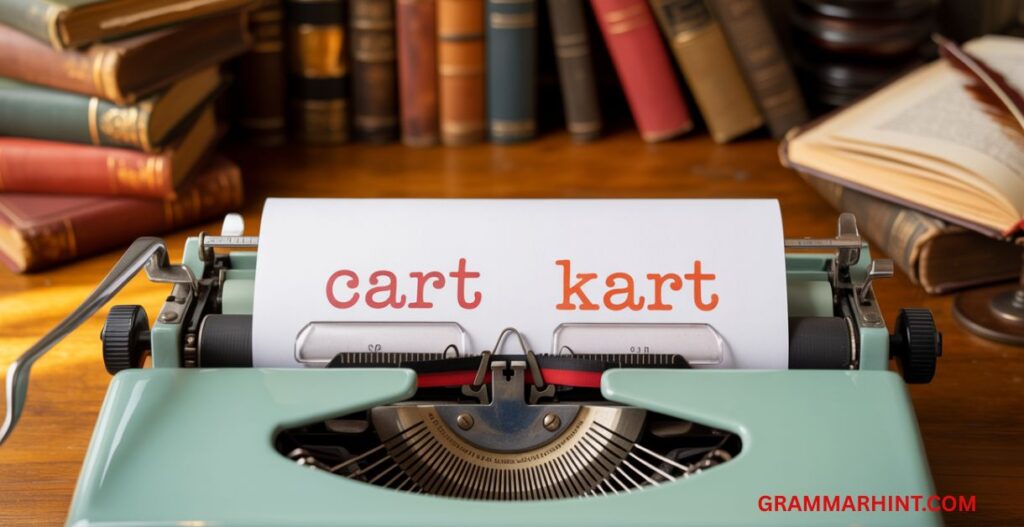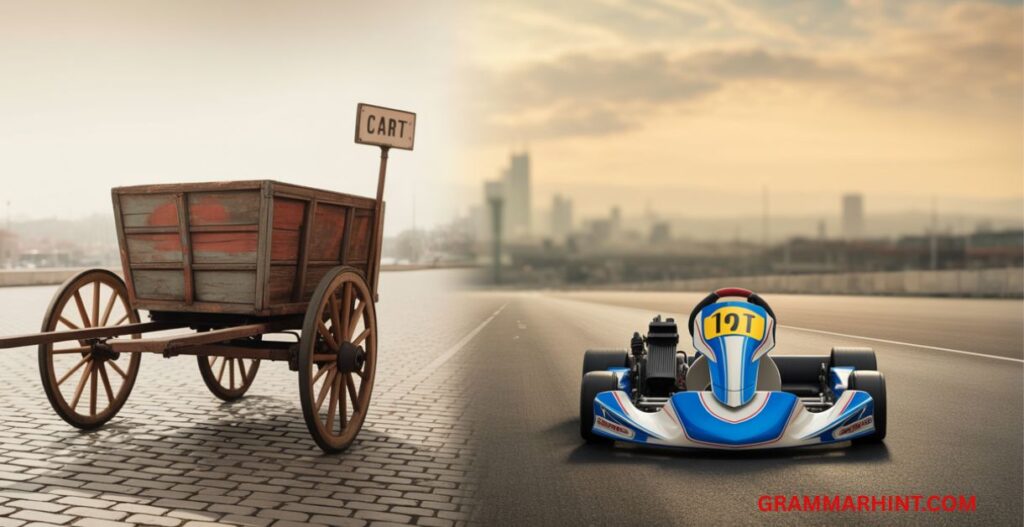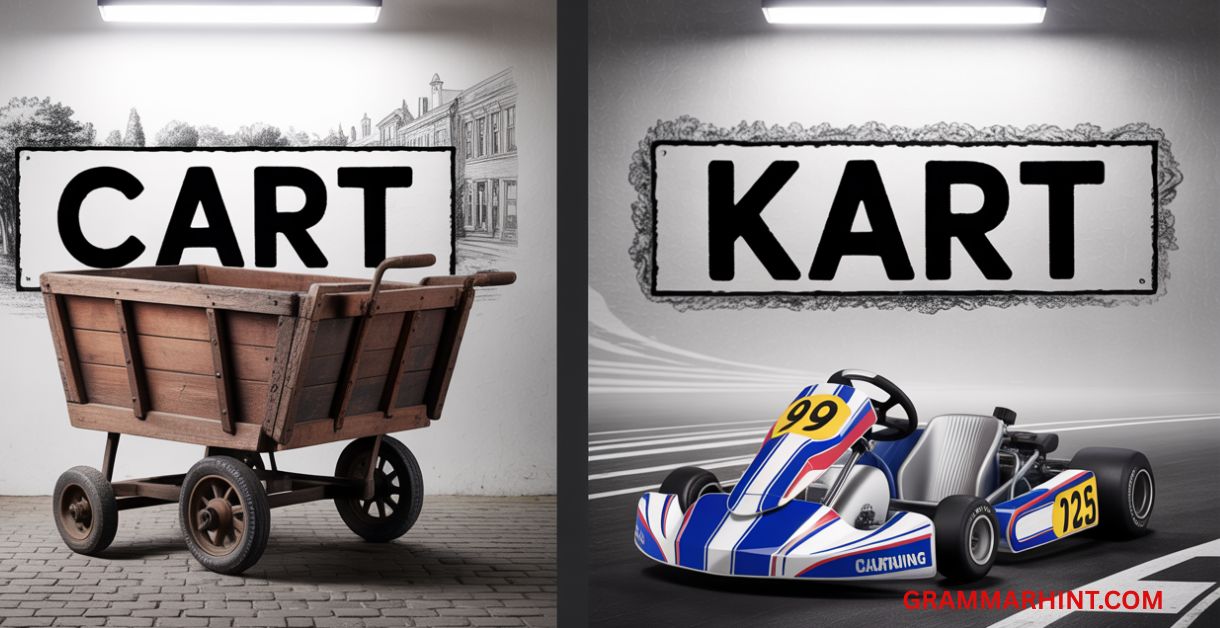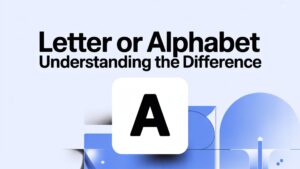Wrestling with cart vs kart can feel trivial. Yet, it matters especially when clarity and correct usage count. Let’s explore when to use cart or kart and why.
Homophones, Homonyms, Spelling Differences
Homophones are words that sound the same but have different meanings or spellings. That applies to cart and kart, although they aren’t perfect homophones (most people pronounce them identically). We also encounter homonyms, where spelling and pronunciation match but meaning differs. The spelling differences here are simple: one starts with “c” and the other with “k.”
Origins: Etymology of Cart and Kart
- Cart—from Old English cræt, Latin carrus. Think carriage, wagon, trolley, hand cart. It evokes transportation, shopping, logistics, freight handling, manual transport, wagon, load carrier even horse-drawn cart.
- Kart a modern twist. It springs from early motorsports, especially go-kart racing. This small race vehicle used for speed on oval or track surfaces. We see racing kart, Go-Kart, electric kart, gas-powered kart, and electric go-kart.
When to Use “Cart”

Use “cart” for non-motorized or motorized-but-not-racing vehicles, shopping tools, and metaphors.
Shopping Cart and E-commerce
In retail or online shopping, “cart” rules. People say, “Add this item to your shopping cart.” On an online shopping cart, you click “checkout.” E-commerce platforms rely on e-commerce cart, retail tools, and delivery tools.
Example (Email to team):
Subject: Update on the New “Shopping Cart” Feature
Hi Jenna,
We finished testing the e-commerce cart updates. The shopping cart now shows item thumbnails and estimated shipping. Let me know if you find any glitches.
Best,
Alex
Hand Cart, Trolley, Wagon, Freight Handling
In warehouses or markets, we roll goods on a hand cart, trolley, or wagon.
Example (Email to vendor):
Subject: About the Hand Cart Order
Hello Marco,
Our team tested the hand cart yesterday—no squeaks, smooth wheels, sturdy frame. Let’s schedule freight handling next week.
Thanks,
Sarah
Horse‑Drawn Cart & Manual Transport
In historical or rural settings, “cart” evokes tradition.
Example (Blog snippet):
Picture a horse-drawn cart rolling down a country lane. That simple manual transport method shaped early logistics and shaped village life.
When to Use “Kart”
Switch to “kart” for high-speed, small-frame, motorized vehicles—especially in racing sports, motorsports, or fun leisure drives.
Go‑Kart, Racing Kart, Track Racing
Go-karts come in all flavors: racing kart, electric kart, gas-powered kart, mini vehicle—ideal for track racing.
Example (Email inviting friend):
Subject: Let’s Try Kart Racing
Hey Chris,
Want to hit the local track? They’ve got electric go-karts and gas-powered karts for beginners. I say we rent a go-kart each and go for some recreational driving.
Cheers,
Pat
Electric Kart, Electric Go‑Kart
As electricity meets fun, electric go-kart enters the scene—quiet, eco-friendly, powerful.
Example (Product description):
Experience smooth, near-silent speed with this electric kart—top speed 25 mph, 48‑volt battery, ideal for young racers.
Mario Kart, Video Game Racing, Arcade Racing
Enter the digital realm. When gaming, Mario Kart stands front and center—a famous video game racing franchise with arcade-style fun.
Example (Reddit style snippet):
I grew up playing Mario Kart at arcades—nothing beats that rush when hitting Rainbow Road!
Cart vs Kart: Side-by-Side Comparison

| Context | Use “Cart” | Use “Kart” |
|---|---|---|
| Shopping & e‑commerce | shopping cart, online shopping cart, e‑commerce cart | — |
| Manual transport | hand cart, trolley, wagon, load carrier, freight handling | — |
| Historical or rural transport | horse-drawn cart, manual transport | — |
| Recreational racing | — | go-kart, racing kart, electric kart, gas-powered kart, mini vehicle, electric go-kart |
| Video games | — | Mario Kart, video game racing, arcade racing |
Common Scenarios and Examples
Scenario: Corporate Email on E-commerce
Subject: Live Testing of New Online Shopping Cart
Hey Team,
We launched the new e-commerce cart yesterday and ran a shopping cart stress test with 500 items. No crashes, payment flow works smoothly. Great job, everyone!
Cheers,
Maya
Scenario: Warehouse Logistics Update
Subject: Freight Handling with New Hand Carts
Hi Raj,
The new hand carts and load carriers arrived today. We’ll integrate them into our logistics workflow tomorrow during manual transport drills.
Regards,
Tina
Promoting a Go-Kart Track
Subject: Join Our Go‑Kart Racing Weekend!
Hello Racers,
This Saturday, we’ll offer go-kart racing for ages 8+. Try our electric kart or gas-powered kart on our new track racing circuit. Think recreation, motorsports, fun.
See you there,
The Speedway Team
Scenario: Blog Post About Video Game Racing
Anytime you pick up a controller, you feel the rush of video game racing. Whether it’s Mario Kart on your Switch or arcade racing titles, that little screen turns your couch into a starting line.
Why Does This Matter?
Choosing between carting or karting isn’t just a spelling preference—it’s about clarity.
- In logistics and online retail, customers expect a shopping cart.
- For motorized recreation, only kart sparks the right image—electric, fast, enclosed.
- In word usage, the right spelling avoids confusion and shows language clarity.
- When writing, know your audience: a warehouse team cares more about hand cart than Go-Kart.
Writing Tips: Grammar Clarity & Word Choice
- Know your homophones: misuse distracts readers.
- Use bold to highlight key terms like shopping cart or electric kart.
- Vary sentence structure—mix short and long—for better burstiness.
- Use examples, anecdotes, and analogies: they breathe life into explanations.
- Read aloud: if a phrase sounds unnatural, rewrite it.
- Keep sentences lean. Avoid saying “due to the fact that.” Say “because.”
- Insert transitions: “However…,” “For example…,” “In contrast…”
Final Thoughts: Kart or Cart?

When you need a mini, motorized racing vehicle, go for kart.
When you’re hauling goods, shopping, or handling freight, stick with cart.
The distinction between kart vs cart reflects more than a letter—it signals the purpose, context, and audience.
Next time you type cart or kart, ask: am I talking about a vehicle used for shopping or logistics, or a small racecar?
Get this right, and your writing shines—clear, confident, and reader-friendly.
Let me know if you’d like extra detail on any section or more scenario examples!









